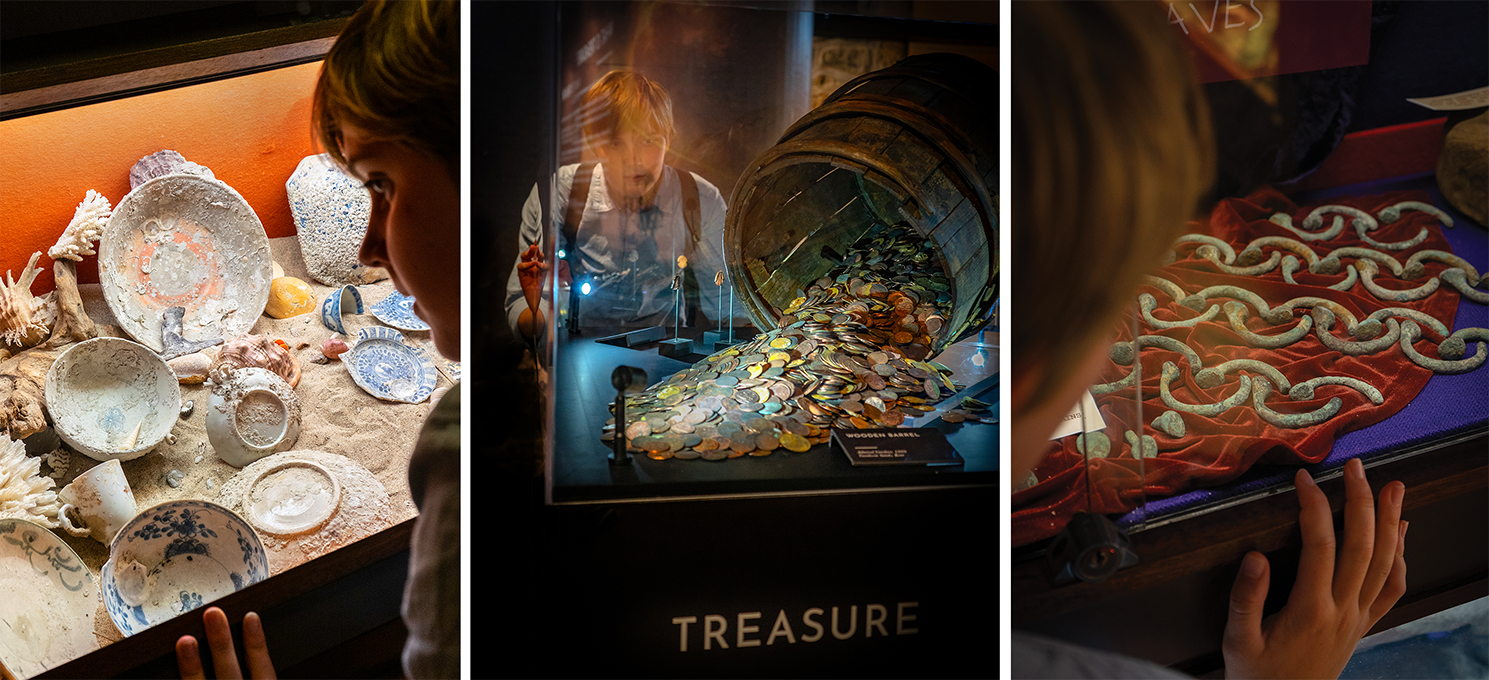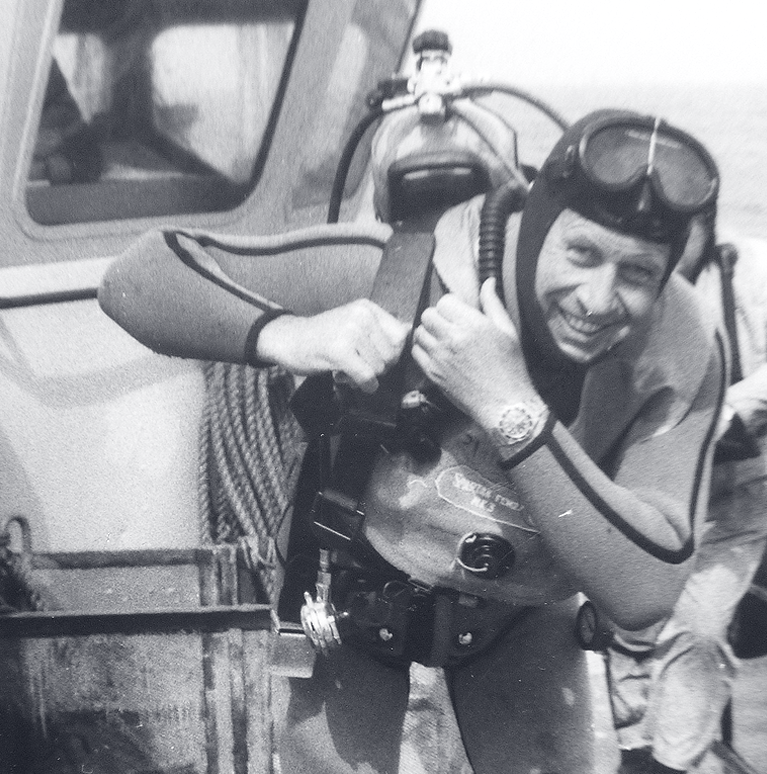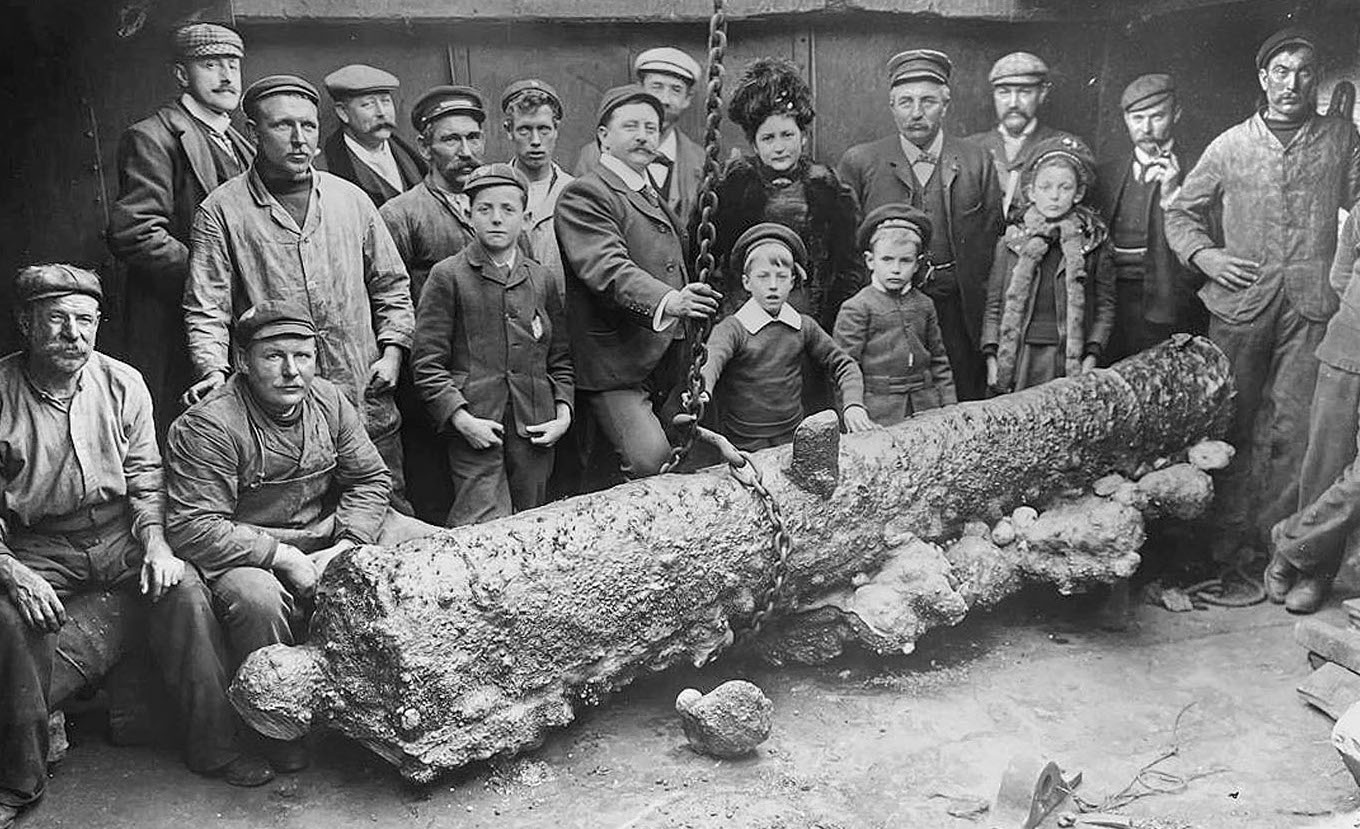

The Shipwreck Archive of Richard Larn OBE & The Charlestown Shipwreck Museum Sale
Penzance & Charlestown, 5th, 6th, 7th, & 8th November

In 1982 the Tudor warship ‘The Mary Rose’ was raised from its 437-year resting place on the seabed of the Solent. The raising was screened live on television and the whole nation watched, completely spellbound. And as a maritime nation, we are still fascinated by all things ‘Shipwreck’ today, and why would we not be? - it is so bound up with romance and mystery.
So when we, Lay’s Auctions, were asked to handle the possible auction of Charlestown Shipwreck Treasure Museum, we leapt at this gargantuan, but ultimately deeply rewarding and memorable task. What we have learnt over the last few hectic months as we have painstakingly catalogued the museum’s extraordinary collection of artefacts, will stay with all of us all forever. That sounds like hyperbole, but when you hold in your hand the shoe of an 18th century sailor who probably drowned as his ship went down, every detail of that ship’s history will totally come alive to you.
Truly, it will.
Dived and discovered in 1967 by Richard Larn, financed by Rex Cowan
The cataloguing team at Lay’s who have been working with the museum’s vast collection, currently 1200 lots and counting, have all been captivated by different artefacts for differing reasons. However, it is the curse of provincial museums with dusty cabinets, how do you display everything to make it interesting and really bring it to life? Many of the objects at Charlestown are much more exciting than they first appear. We constantly found that once we started to look closely, and learn the historical background, we became entranced by the coin, or weapon or whatever relic it was, encased in marine concretion that we held in our hands.
On a particularly special day we were joined at Charlestown by David Gibbins, who is one of the world's foremost maritime archaeologists as well as a Sunday Times and New York Times bestselling author. His book ‘The History of the World in Twelve Shipwrecks' is a fascinating read. He was at Charlestown to photograph artefacts from the shipwreck of the Santo Christo de Costello, a Cornish wreck of 1667, and one of the twelve in his book. He was tremendously generous with his knowledge and had us all captivated whilst he explained the cultural significance of this wreck and its history. For example, David’s research has shown that the departure of the Santo Christo de Costello in 1667 was delayed for several months by an artist, whilst he completed two paintings that were part of the ship’s cargo.
Why would a ship wait so long just for two pictures?
The artist’s name?
Rembrandt.
We hung on David’s every word.
So we have approached our cataloguing through stories, and the biographical details of each shipwreck. Every shipwrecked lot has its own story and it is through these details, we hope to convey the object's significance and bring the artefact to life in the minds of those viewing the auction.
We want the casual auction buyer to look at a tiny 19th century musket flint, and decide he simply must have it, because that flint came from the wreck of the Earl of Abergavenny, and that ship was captained by John Wordsworth, brother of the poet, William Wordsworth. Not only did the ship go down with the tragic loss of 260 lives, but Wordsworth and his sister Dorothy, were devastated by the loss of their brother John. Their grief, in turn, affected their wider literary circle, especially Samuel Taylor Coleridge, author of The Rime of the Ancient Mariner.
It is provenance like that which gives us goose bumps, the tantalising sense of actually being able to touch history, and hold it in our hands.
Musket flints from HMS Abergeveny, sunk in Weymouth Bay, 1805
The Earl of Abergavenny is just one tragic story of many. The SS Mohegan. HMS Royal Oak. The Titanic, our fascination with that particular tragedy knows no boundaries. The indelible marks that these disasters have left on our nation’s history is particularly important.
Surely one of the most significant is the Scilly Naval disaster of 1707.
On the night of 22nd October 1707, four Royal Navy warships HMS Association, Eagle, Romney, and Firebrand, were lost off the Isles of Scilly, with as many as 2,000 sailors perishing, including the Admiral, Sir Cloudesley Shovell himself, although rumours suggest that Shovell actually survived the sinking of his ship, but was subsequently murdered as he lay on the shoreline, and his body plundered for his emerald ring.
Shovell (1650-1707) is no longer a household name, but during his own lifetime Shovell was as famous and respected a naval commander as Lord Nelson was in the 1800s. The staggering human loss of this incident made it one of the worst maritime disasters in British naval history.
The disaster, caused by bad weather, inaccurate sea charts and the difficulty of measuring longitude, shocked the nation and spurred the government into passing the Longitude Act. The Board of Longitude was established offering a prize for anyone who could devise a method for determining a ship’s precise location at sea. This was eventually achieved by John Harrison, a Yorkshire carpenter-turned- clockmaker. It took 25 years and four attempts, but in 1759 he invented a marine chronometer, the H4, that allowed a ship to calculate its longitude by comparing the difference in local time at sea with the time in Greenwich.
The ability to determine longitude was one of the most important scientific breakthroughs in history, it revolutionised maritime navigation, which imbues any artefact from this Scilly wreck site with a particular significance. The Charlestown Shipwreck Museum houses the largest collection of artefacts from the Scilly Naval Disaster of 1707, with many items from the wreck of the Association and HMS Eagle.
Perhaps the most impressive is a large piece of the ship’s stern section. Heroic in scale, and ornately carved, it gives us a real sense of the grandeur of HMS Eagle, a 70-gun third rate Ship of the Line that was built in Portsmouth Dockyard between 1677 and 1679. The rarity of any piece of a vessel from this period cannot be overstated. That, coupled with the historical significance of this wreck site, makes this glorious relic as remarkable as any piece of sunken treasure.
The waters of the British Isles are filled with these unobtainable treasures, and in order to protect them, British maritime law ensures that intrepid wreck divers who try to recover them are subject to some of the strictest governance in the world. The Protection of Wrecks Act 1973 ensures that no one can dive a designated site without a licence. Further licences must be obtained to excavate or recover artefacts. All findings must be declared to the ‘Receiver of the Wreck’ and the true owner sought. It is an expensive, lengthy and bureaucratic process.
And this reason alone makes the collection at the Charlestown Shipwreck Museum so very special, because since 1973 obtaining and owning shipwreck artefacts is fraught with great difficulty and expense.
The collection at Charlestown was created at a time when it was still possible. It was put together in the 1960s and early 70s by the legendary wreck diver Richard Larn OBE

The life of this remarkable seafarer reads like a treasure map of adventure and innovation. Larn taught himself to dive in the Thames in 1947 using a German Dräger U-boat escape set. The Merchant Navy beckoned next, where he climbed the ranks to 2nd Mate while sailing under the South American Saint Line.
In 1950, he made the life-changing decision to join the Royal Navy. Over the next 22 years, he would pioneer diving techniques that would forever change naval history. He was part of the first team of divers to operate from Dragonfly helicopters, recovering gunnery target drones off Malta—long before SAR divers ever appeared on the scene. He joined the British Sub-Aqua Club in 1957 and became a driving force behind the Royal Navy Sub-Aqua Club, leading numerous diving expeditions around the globe. His extensive research into the Scilly naval disaster of 1707 led to the discovery of several historic wrecks, including the legendary HMS Association. He led expeditions that further explored the site, cementing his legacy as one of the great maritime explorers of his time.
After his illustrious Navy career, he founded Prodive Ltd, a commercial diving training center, helping to elevate the standards for professional divers in the UK. He founded the Charlestown Shipwreck & Heritage Centre, creating the basis of the extraordinary collection that we are now cataloguing, a venture he ran with his wife, Bridget, until 1998, and if all this wasn’t enough, together with his wife he penned over 65 books, including the monumental "Shipwreck Index of the British Isles," which remains a key resource for maritime historians and archaeologists today. His work has been recognized at the highest levels, earning him an OBE in 2009 for services to nautical archaeology and marine heritage, as well as countless other accolades.
In the same week as the extraordinary sale of the Charlestown Shipwreck Museum, we will also be holding the sale of Richard Larn's archive which consists of 1,630 books, extensive research files from the monumental ten-year project of the Lloyd's Shipwreck Index, charts, and hundreds of photographs used in Richard's numerous works, and also includes a carefully curated selection of artifacts that Richard personally salvaged and cherished.

Just one of many fascinating images from Richard Larn's extensive photograph shipwreck archive
Returning to the Mary Rose in Portsmouth, where the museum created to house this wonderful Tudor time capsule is so magnificent and arguably one of our country's best visitor attractions, it is surprising that the UK doesn't have a nationally funded museum for marine archaeology, when our seas are filled with such zealously protected shipwreck sites.
Almost every item in the Charlestown Shipwreck museum comes from a wreck site that deserves to have its story told, and we are relishing the opportunity to tell those stories to everyone who will listen.
Viewing times in Penzance: Fri 1st Nov 9am - 5pm, Sat 2nd Nov 9am - 1pm, Mon 4th Nov 9am - 5pm
Viewings will be at The Charlestown Ship Museum, in Charlestown, St Austell
Viewing times in Charlestown: Sat 2nd Nov 9am - 4pm, Sun 3rd Nov 9am - 4pm, Mon 4th Nov 9am - 4pm, Tue 5th Nov 9am - 4pm
The news, history and stories behind our art and antiques